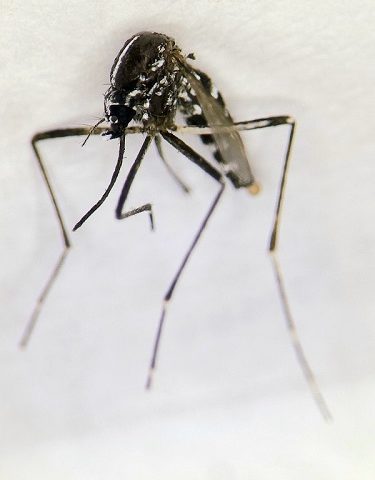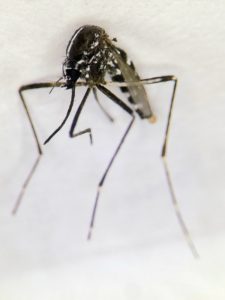This website uses cookies so that we can provide you with the best user experience possible. Cookie information is stored in your browser and performs functions such as recognising you when you return to our website and helping our team to understand which sections of the website you find most interesting and useful.
Dangerous Asian tiger mosquito AEDES ALBOPICTUS found in Slovakia

komár / mosquito Aedes albopictus
Biomedical Research Center SAS confirmed another species of invasive mosquito in Slovakia. The invasive species of Aedes albopictus mosquito, commonly known as the Asian tiger mosquito, was discovered based on the data collected from the public in 2023 in the Bratislava area. Residents used, among other things, the Mosquito Alert mobile app, which helps experts monitor invasive mosquitoes across Europe. The discovery of this mosquito species was subsequently confirmed with the help of molecular analyses at the Institute of Virology of the Biomedical Research Center SAS.
“Since there were several findings within the Ružinov district, we assume that this mosquito has already settled here,” stated RNDr. Viktória Čabanová, PhD., independent researcher of the Biomedical Research Center SAS and a mosquito expert.

komár / mosquito Aedes albopictus
Aedes albopictus is one of the invasive species of mosquitoes that spread from Asia to the whole world by means of the import of commodities such as tires or ornamental bamboo, also called “lucky bamboo”. It is one of the most dangerous invasive mosquito species found in continental Europe. It transmits up to 22 different viruses, such as the West Nile virus, which is already circulating in our territory, but also exotic viruses, such as dengue, chikingunya, Zika or yellow fever. Since the Asian tiger mosquito is already present in Europe, these viruses are also found there. The highest number of locally acquired infections caused by the dengue virus was recorded in continental Europe in 2023, especially in France, Italy and Spain. This species of mosquito appeared in Slovakia already in 2012 in the area of Košice (Bocková et al. 2013), but did not manage to settle in our territory at the time. However, the situation has changed.
The season of the invasive Aedes albopictus mosquito species starts in April and ends in early November, but unlike other mosquito species, it is active during the day. We can find it in the interior, as well as in close proximity to dwellings, and its bite is very aggressive, therefore it can cause a lot of pain. It is a prominent transmitter of diseases, which means that it is important to monitor and regulate its population. It reproduces in man-made hatcheries such as boxes and containers with a small amount of water, flower pots, gutters, sewage systems, waste filled with water, and up to 200 larvae of this species can hatch from a plastic bottle cap. The range for this mosquito species is only 200 to 500 m from the hatching point, while, in comparison, flood mosquitoes fly 25 to 50 km from their hatching point. This mosquito species is able to survive the winter in our climate.
“Given the risks, it is very important to monitor the occurrence of invasive mosquitoes and the diseases they carry. Residents play an important role in its regulation, because without them, it is impossible to eliminate these mosquito species. Each of us can influence through our activities the extent to which we will be at risk of infection with exotic viruses in the future. One example of this is the freely dumped waste that we produce, which the invasive mosquitoes use as a place to breed,” explains mosquito expert RNDr. Viktória Čabanová, PhD.
Source: Press Release of the BMC SAS
Photo: BMC SAS
Translated by: SAS







